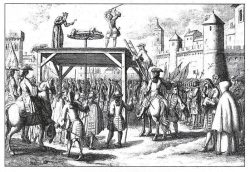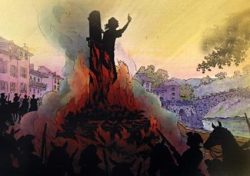Death penalty
The death penalty was likely for pastors that came back to France, smugglers that had helped them leave the country, the faithful caught at an “underground” meeting.
Ordinances gave further defined the provisions of the Fontainebleau treaty.
An ordinance dated July, 1, 1686 sentenced to death pastors who came back to France and the faithful caught while attending an illegal meeting.
In order to curb emigration, the October 1687 ordinance extended the death penalty to smugglers who had helped the fugitives.
On March 15, 1689, the death penalty without a legal trial was ordered for all those who had been caught attending an illegal meeting and men suspected of taking part in one were sentenced to the galleys.
Executions were carried out in horrific conditions : various tortures followed by the Wheel or burning at the stake. Hanging was the « best » alternative.
In the Languedoc region, superintendent Basville often enforced this sentence.
The preachers were executed one after the other : in October 1689, after a meeting in Hospitalet (Lozère), six preachers were sentenced to death by hanging.
Pastor Bousson was sentenced to death by the Wheel in November 1698.
The leaders of the Camisards were liable for the same sentences, as a result:
- Séguier was burnt alive on August 12, 1702.
- Castant, Couderc, Boaton were executed on the Wheel in Montpellier between 1702 and 1705.
- Catinat, Ravanel were tortured to death in Nîmes on April 22, 1705.
Associated tours
-
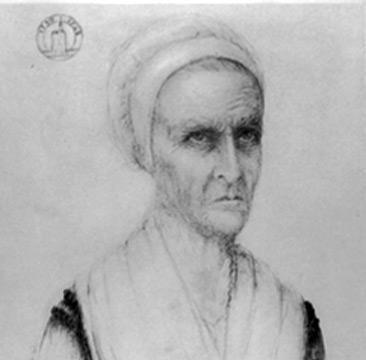
Royal repression against the Protestants
The revocation of the Edict of Nantes in 1685 made any Protestant worship illegal, for instance temples were demolished and pastors expelled. As for the Protestants, they were forbidden to...
Associated notes
-

Sentenced to the galleys
Roughly 550 galley-rowers spent up to thirty years of their life in galleys for refusing to renounce their faith. -

The prison sentence
Women and children that were too young to serve as galley-rowers were sent to prison. However, many men were kept in prison for long periods of time, some before they... -

The sentences imposed on Protestants
The Edict of Fontainebleau (1685) and various decrees of 1686 imposed penalties on Protestants. -
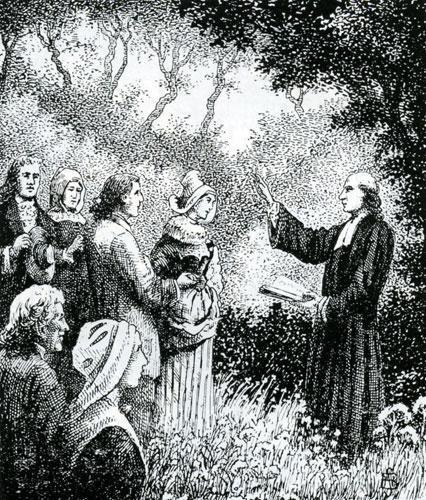
The Church under Louis XV (1724 to 1760)
Under Louis XV the Protestant church was still banned and the repression continued. But this varied over time, from region to region and depending on the person who was Intendant... -
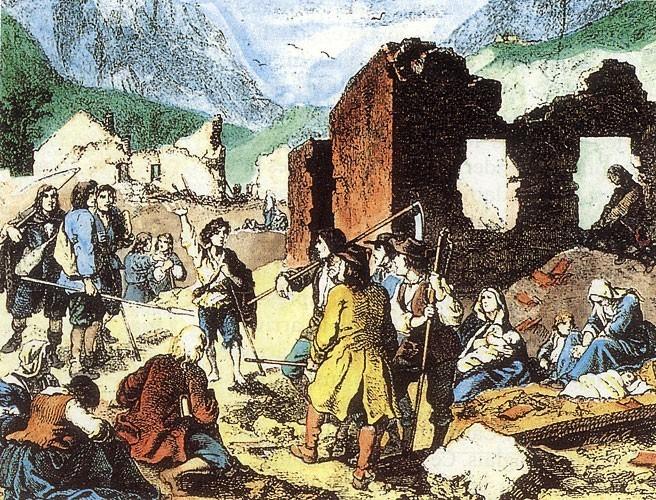
The secret re-building of churches
The secret re-building of churches was the work of Antoine Court who re-established discipline in Reformed Churches, first in the south then in some areas of the north.

